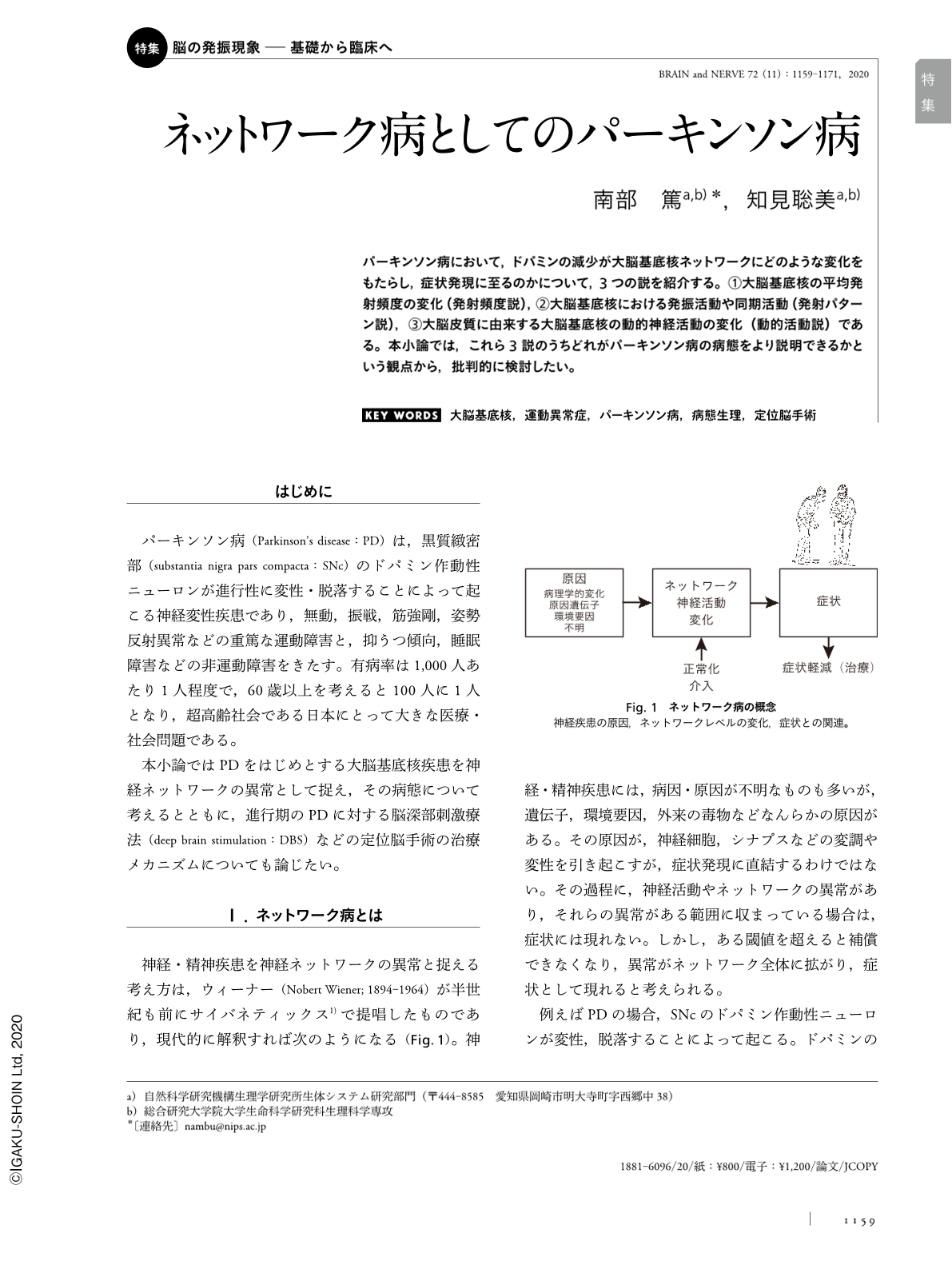Japanese
English
- 有料閲覧
- Abstract 文献概要
- 1ページ目 Look Inside
- 参考文献 Reference
- サイト内被引用 Cited by
パーキンソン病において,ドパミンの減少が大脳基底核ネットワークにどのような変化をもたらし,症状発現に至るのかについて,3つの説を紹介する。①大脳基底核の平均発射頻度の変化(発射頻度説),②大脳基底核における発振活動や同期活動(発射パターン説),③大脳皮質に由来する大脳基底核の動的神経活動の変化(動的活動説)である。本小論では,これら3説のうちどれがパーキンソン病の病態をより説明できるかという観点から,批判的に検討したい。
Abstract
Network disorders of the basal ganglia may underlie the pathophysiology of movement disorders, such as Parkinson's disease and dystonia. The following models have been proposed to explain network disorders: (1) the firing rate model: an activity imbalance between the direct, indirect, and hyperdirect pathways induces changes in the mean firing rate of the output nuclei of the basal ganglia and causes hypokinetic or hyperkinetic movement disorders, (2) the firing pattern model: oscillatory and/or synchronized activity in the basal ganglia disturbs information processing in this area, resulting in motor symptoms and, (3) the dynamic activity model: abnormal neuronal modulations through the direct, indirect, and hyperdirect pathways disrupt the balance between movement-related inhibition and surrounding excitation in the output nuclei, which leads to motor symptoms. We present a critical analysis of these models in this review. Stereotactic surgery, which involves the application of high-frequency electrical stimulation (deep brain stimulation) or coagulation of a small area in the basal ganglia is an effective therapeutic strategy to treat movement disorders. We have also discussed the mechanism underlying the beneficial effects of stereotactic surgery.

Copyright © 2020, Igaku-Shoin Ltd. All rights reserved.


